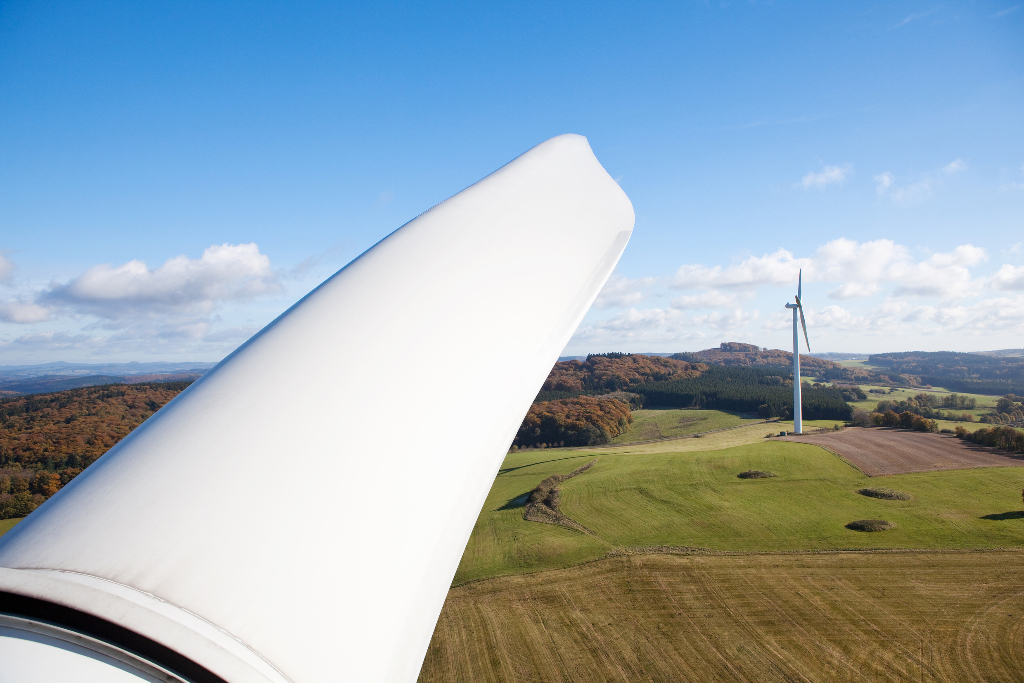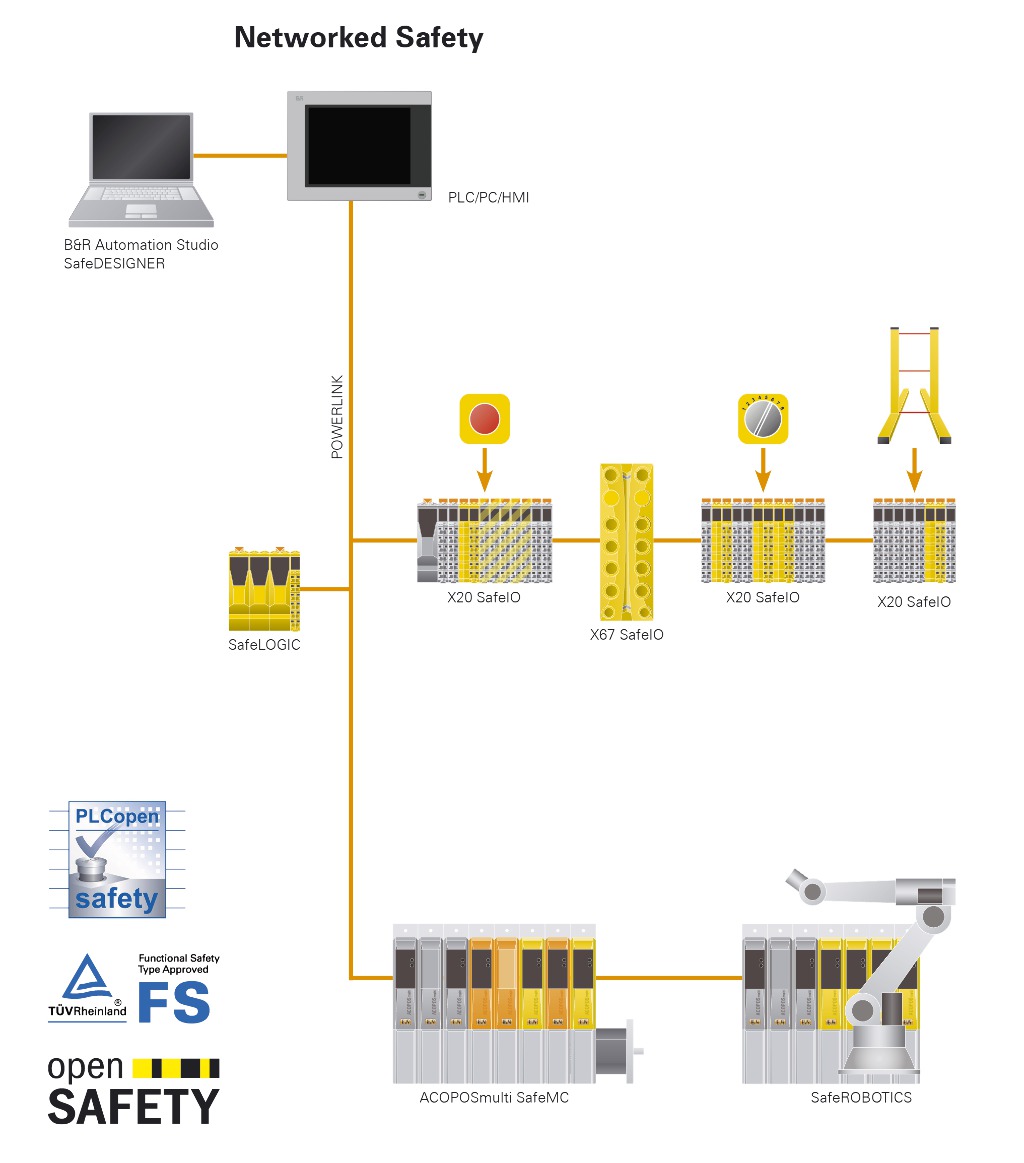

With B&R safety technology, you'll be well-equipped for state-of-the-art innovations – today and into the future."
Peter Kronberger, Wind Energy Project Manager at B&R
Wind farms are an increasingly common landscape element in many regions. For good reason, too. After all, wind turbine generator systems are one of the cleanest sources of energy available. Just like other machinery, they too must adhere to strict safety requirements. Progressive safety solutions from B&R give wind turbine manufacturers all the tools they need to meet thesedemands.
Wind turbines must be designed to operate safely under all possible conditions, including extreme weather events. Regulations are in place to govern all aspects of wind energy generation. They also serve as guidelines for manufacturers. Certification according to the IEC 61400 standard for wind turbines or the "Guideline for the Certification of Wind Turbines" from Germanischer Lloyd (GL) provides a seal of quality for the rotating giants.
The primary focus of the GL guideline is on defining all conceivable load scenarios that might occur over the planned lifetime of a turbine. Any conditions that fall outside these scenarios can result in undefined turbine behavior. In the worst case this could even present a hazard to personnel and equipment. The purpose of a safety solution is to ensure that this never occurs. This is the reason for an important update in the latest version of the 2010 Edition of the GL guideline requiring a modern safety system in line with ISO EN 13849 "Safety of machinery". More specifically, it requires an evaluation of all critical components with regard to safety. The 2010 Edition replaces the previous 2003 Edition with a transition period until 2015.
B&R's integrated safety technology is a sleek and elegant way to meet all of the requirements and provide maximum safety. The system is rated Performance Level e according to ISO EN 13849 and SIL 3 according to IEC 61508. As robust as it is effective, B&R safety technology can easily handle even the most demanding environments. This is confirmed by the GL certification for maritime use.
Fastest safety system
With B&R safety technology, the possibilities are virtually endless. It is also one of the fastest solutions on the market. It achieves response times of seven milliseconds – from the time data is received on a safety module input until it is output to a safety module, including the processing cycle. Such a quick reaction allows parameters to be set that shut down the system more gently. Intelligent responses to safety-critical states – like those that take the current operating mode into consideration – can further reduce the strain on the system.
B&R safety technology can be seamlessly integrated into the main control system. From the perspective of the main control system, the safety components behave just like any other I/O module. Conversely, the safety modules have access to all the data on the main control system. This makes it possible to implement step sequences, complex closed loop control algorithms and even coordinated positioning sequences in the main control system with no restrictions. It also allows conventional, proven tools to be used and the safe outputs to be controlled directly from the main control system. The safety control system simply monitors in the background – engaging only when a safety-critical state is detected.
Another clear benefit of seamlessly integrating the safety and standard control systems is that it reduces wiring to a minimum. A safety module is simply positioned in the vicinity of a safety sensor such as an E-stop button. Since the standard system has access to the safe module, there is no need to cross-wire the two systems. The safety data is transmitted via the system bus, which allows it to be decentralized via various types of wiring (e.g. copper or fiber optic). There is no need for additional safety wiring between the turbine enclosure and the foot of the tower.
The development environment for the safety application is seamlessly integrated in B&R's automation tool, Automation Studio. Graphic programming and certified function blocks make programming safety applications simple and intuitive. Users are also free to develop their own safety function blocks in high-level programming languages such as ANSI C or C++ in order to create complex applications or port existing solutions.
Software updates from a remote station
B&R implemented a certified remote access interface so the safety system can be reached from even the most distant locations. This interface can be used to update the safety application, for example. If the appropriate measures have been taken to ensure that the system is safe – such as a surveillance camera or special sensors – errors can also be acknowledged from the remote station. This type of solution is permitted explicitly in the Germanischer Lloyd guidelines. Remote acknowledgment reduces the number of expensive and time consuming service calls and significantly increases system availability.
For communication of safety data, B&R uses the open source openSAFETY protocol. Manufacturers of safety sensors and components benefit by only having to certify the functionality of the sensor or component itself. Also, unlike any other safety protocol, openSAFETY is not bound to any specific fieldbus. The data packets are secure and can be transmitted on any data channel. End customers are free to use their preferred fieldbus and can mix and match products from different manufacturers as needed.

System-wide safety solution
The complete transparency of B&R's safety technology and the use of the openSAFETY standard allow B&R's safety controllers to communicate freely with one another. This makes it possible to establish redundancy or to layout a safety network
in which the overall safety system spans the entire wind farm and each turbine is set up as a subsystem. This would eliminate the need for every turbine in the wind farm to have its own sensors for wind speed and direction or ice accumulation, while still allowing them to be monitored for safety. When a single turbine is shut down due to excessive wind, others can be warned. This allows them to prepare to shut down, making the process less harsh on the components.
Only time will tell in what direction safety technology for wind turbines will develop. With B&R safety technology, you'll be well-equipped for state-of-the-art innovations – today and into the future.